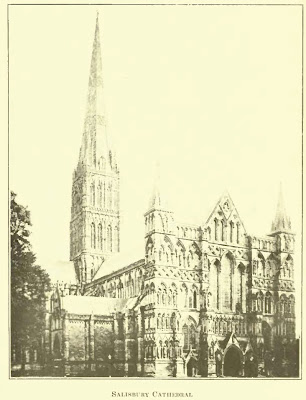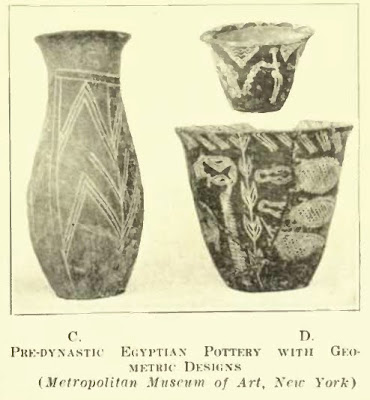by Corry Shores
[Search Blog Here. Index-tags are found on the bottom of the left column.]
[Central Entry Directory]
[Deleuze Entry Directory]
[May I deeply thank the sources of the images used in this posting:
fi.edu/Science of Gears
Imagination Factory
Science Buddies
National Cartoonists Society
Buck Batard at Bad Attitudes
Book Calendar
Mercury at Philosophy of Science Portal
bancroft.berkeley.edu
rubegoldberg.com
sawing14s
Thanks Stephen Worth at ASIFA
Red Yak
Bent at The Atlantic Community
thenonist.com
National Cartoonists Society
wiki
libertylive.org
counternotions.com
mousetrapcontraptions.com
Simple Machines Inventions Webquest
pomperaug.com
Argonne
SCHS
Lee L. Lowery & Sandeep Ghorawat
Credits given below the image and at the posting's end.]
Rube Goldberg's Machines Under Deleuze's Differential Mechanics
Much in our life and the world around us seems to be mechanically related. But consider our more profound mechanical responses. At the death of a loved one, we might be moved to create something beautiful. The pain of our grieving triggers our making something that gives us joy to behold. Often times, the mechanisms in our lives pair together very different things, and in fact, that is what gives them their mechanical power; they take one thing and make it into something very different. The workings of our life, in a sense, could be seen as the contra-operations of many different mechanisms, all functioning on the basis of differences being mechanically connected. Given that they are based on differences, they are more disjunctions than conjunctions. Yet the whole assembly of differential machines that make up our lives somehow despite each other function to make us and our world.
[Under Ongoing Revision]
Deleuze in a sense is a mechanical engineer. One way we might understand Deleuze's mechanics is by analyzing the workings of Rube Goldberg's machines (Deleuze & Guattari print two Goldberg machines in the appendix to the French edition of Anti-Oedipus, when describing desiring machines). What we note from the machines is how comically unrelated are the conjoined parts. They are more like disjunctions than conjunctions, but they are mechanical, because they affect one another; or we might say the resulting transformations are always implied yet never coherent. What we see is the production of differences on the basis of differences.
Our main idea will be that Deleuze's mechanics is a science of difference and that this sort of mechanics pervades all aspects of our lives, including our behavior and the way we relate to other people and the world around us. At times Deleuze refers us to Rube Goldberg's machines. These we will understand in terms of differential relations of parts functioning by means of their disjunction. Before that discussion, we will look first at simple machines to see how in a basic way they are based on differential relations of a simpler sort than concerns us here.
Consider for example the lever.

(Thanks fi.edu/Science of Gears)
Pushing down on the lever lifts the rock upward. So the upward motion is the direct result of the downward one. This is a transfer of motion, in this case, an inversion of direction of linear motion. In a sense, up is implied in down. We might say that this is what gives the device its mechanical quality. It converts motion. Something goes in; something different comes out. It's like a black box, in a sense, except we can see the working inside.
We might also think of it like Edwards & Penney's Function Machine. Some given value goes in, and another value, assigned to the first, invariably comes out.
Consider also a pulley. A downward motion on one side implies upward on the other.
And finally, consider when two gears mesh together, with one rotating the other. Here the basis of the mechanism would seem to be the compatibility of the parts, and not their difference. But do not forget that one gear meshes with the other because there is a space where the other has a tooth. And the clockwise motion of the one implies the counterclockwise motion of the other.

(Thanks Imagination Factory) (Thanks Science Buddies. Credited as public domain.)
So the point is that these parts relate to one another differentially. In fact, this differential relation is the basis for their being mechanical. Mechanics, in way, is a science of the effective production of difference by means of difference, for example, the production of a different direction of motion by means of the physical differences allowing one gear's teeth to mesh where the other one has gaps. We might say that the gears are conjoined. But this concept of conjunction does not seem to apply when we consider the place where the motion transfers, like the lever's fulcrum. The precise center of the fulcrum would seem to be a place where the motion moves neither up nor down, and perhaps in fact it moves both directions at the same time. The fulcrum in a way is the place where up and down are forced immediately upon one another, smashed together. Up and down are disjunctively crushed up upon one another. This is a precise point, so we cannot say that any space separates the up from the down motion at the exact fulcrum point. Nothing extends between the two, but there is a pure intensity, a pure degree of difference at a point where the mechanical power explodes outward into its extensive expressions.
Rube Goldberg's Machines
Now we will go one step further, and look at the mechanics of the machines Rube Goldberg invented. We will see that Goldberg's machines are based even more heavily on differential relations, and in a way, they might strike us as being more like the sorts of mechanics we experience in our lives. Here are some pictures of Goldberg.

(Thanks National Cartoonists Society)
Rube Goldberg, portrait 2

(Thanks Buck Batard at Bad Attitudes)
Rube Goldberg, portrait 3

(Thanks Book Calendar)
Rube Goldberg, portrait 4

(Thanks Mercury at Philosophy of Science Portal)
Rube Goldberg, portrait 5

(Thanks William Roberts at bancroft.berkeley.edu)
And let's look first at some animations of his machines. The first is the opening sequence to rubegoldberg.com.
The next one has the appearance of a Goldberg machine. It is from Sesame Street. (For all I know, Goldberg might have made it, but it at least resembles Goldberg's style).
So let's analyze one of Goldberg's machines, looking for the differential mechanics. [Click on image to enlarge]
[And thanks again Stephen Worth at ASIFA for each image-part to follow.] Goldberg announces at the beginning that the invention is a fire extinguisher.
And at the end we see a fire being extinguished.
But what we find is that the invention is not just the device shooting the water, but all the differential disjunctions involved, one implying the next, and all leading up the the extinction of the fire.
Note how it starts. The machine begins with an Eskimo. The fire makes him feel warm. As an Eskimo, he's not used to the heat, so he needs to take off his fur coat. Our first functional disjunction is Eskimo & heat.
He places the fur coat on an elk's antlers, which again seems to be a ridiculous disjunction.
Now we have the mechanical lever move a pair of scissors, which are also a lever, with its mechanical disjunction of motion. But what is more disjunctive is the oddly matched parts of an elk and a scissors.
The scissors releases a spring.
The spring triggers a lever with a hand on it, flipping a coin. Here the conjunction of lever and hand seems disjunctive, as if forced together while being incompatible.
The coin distracts a waiter. Here the connection of motion is highly disjunctive, being based on the mechanisms of human reactions to money.
This causes the waiter to turn himself aside, moving his seltzer bottle away from the drink he was spritzing.
This causes the spritzer to be turned toward the fire and presumably put it out.
This final mechanism is highly disjunctive. It is ridiculous that the waiter did not notice the fire, and instead used the spritzer for the drink. But he does notice money. What should have been an evident mechanical implication for the waiter -- spritzer-water implies fire extinction -- was instead perverted into: money-distraction implies fire extinction. So that is the disjunction: the distraction of money is crushed together with the action of the spritzer, for the function of putting out the fire. This is the function of disjunction. It's funny in this case, but it is quite common in our everyday experiences. Our lives do not function on account of sensible harmonious conjunctions. They function on account of a monstrous assemblage of differential mechanical relations, like a giant infinitely complex Goldberg machine. Often times our strongest motivations to succeed come from functional disjunctions. The profound downward motion of a person discouraging us can produce an upward motion, an unbending determination to prove the discouraging person wrong. Also consider how we might in our lives have had creative moments while under the influence of one intoxicant or another. In these states, incompatible ideas in our mind might emerge seemingly by things which normally would not evoke them. And these ideas might collide with others, producing new ideas that never normally would have been borne from our minds. Here again we see the function of disjunctions. But even mundane mechanisms are disjunctive. When we see a red light while driving, we press the brake peddle. But red and stomping are not logically related. The one implies the other (while driving), but they are foreign to one another, when considered by themselves. Perhaps all function is disjunction. And maybe all machines are differential.
We will find Deleuze illustrating Goldberg machines with Buster Keaton's contraptions. Some of them are sequences of events. Here is one from The High Sign, which is a machine. But note the influence of the cat, and how the cat sends waves of differential relations into the machine.
The following are a number of other machines by Rube Goldberg. I am so very grateful to the sources. [click to enlarge]

(Thanks Stephen Worth at ASIFA)
Rube Goldberg machine, 2

(Thanks Stephen Worth at ASIFA)
Rube Goldberg machine, 3

(Thanks Stephen Worth at ASIFA)
Rube Goldberg machine, 4

(Thanks Stephen Worth at ASIFA)
Rube Goldberg machine, 5

(Thanks Stephen Worth at ASIFA)
Rube Goldberg machine, 6

(Thanks Stephen Worth at ASIFA)
Rube Goldberg machine, 7

(Thanks Red Yak)
Rube Goldberg machine, 8

(Thanks Bent at The Atlantic Community)
Rube Goldberg machine, 9

(Thanks thenonist.com)
Rube Goldberg machine, 10

(Thanks National Cartoonists Society)
Rube Goldberg machine, 11

(Thanks wiki)
Rube Goldberg machine, 12

(Thanks libertylive.org)
Rube Goldberg 13

(Thanks counternotions.com)
Rube Goldberg machine, 14

(Thanks mousetrapcontraptions.com)
Rube Goldberg machine, 15

(Thanks William Roberts at bancroft.berkeley.edu)
Rube Goldberg machine, 17

(Thanks Simple Machines Inventions Webquest)
Rube Goldberg machine, 18

(Thanks Simple Machines Inventions Webquest)
Rube Goldberg machine, 19

(Thanks mousetrapcontraptions.com)
Rube Goldberg machine, 20

(Thanks pomperaug.com)
Rube Goldberg machine, 22

(Thanks Argonne)
Rube Goldberg machine, 23

(Thanks SCHS)
Rube Goldberg machine, 24

(Thanks Argonne)
Image Credits
Machine Images:
Rube Goldberg 1-6
http://www.animationarchive.org/2008/10/comic-strips-rube-goldbergs-side-show.html
(Thanks Stephen Worth at ASIFA)
Rube Goldberg 7
http://redyak.com/rants/Rube/rubeandthings.htm
(Thanks Red Yak)
Rube Goldberg 8
http://atlanticcommunity.blogspot.com/2008/04/barack-mean-to-bubba.html
(Thanks Bent at The Atlantic Community)
Rube Goldberg 9
http://thenonist.com/images/uploads/rube2.jpg
(Thanks thenonist.com)
Rube Goldberg 10
http://www.reuben.org/history.html
(Thanks National Cartoonists Society)
Rube Goldberg 11
http://en.wikipedia.org/wiki/File:Rubenvent.jpg
(Thanks wiki)
Rube Goldberg 12
http://www.libertylive.org/blog_main/post.php?post_id=1687
(Thanks libertylive.org)
Rube Goldberg 13
http://counternotions.com/2009/02/22/self-op/
(Thanks counternotions.com)
Rube Goldberg 14
http://www.mousetrapcontraptions.com/history-4.html
(Thanks mousetrapcontraptions.com)
Rube Goldberg 15-16
http://bancroft.berkeley.edu/events/bancroftiana/113/goldberg.html
(Thanks William Roberts at bancroft.berkeley.edu)
Rube Goldberg 17
http://204.108.129.136/res/courses/scie/sa/lessons/unit2/wqforcesRGsci8.htm
(Thanks Simple Machines Inventions Webquest)
Rube Goldberg 18
http://204.108.129.136/res/courses/scie/sa/lessons/unit2/wqforcesRGsci8.htm
(Thanks Simple Machines Inventions Webquest)
Rube Goldberg 19
http://www.mousetrapcontraptions.com/rube-cartoons-2.html
(Thanks mousetrapcontraptions.com)
Rube Goldberg 20
http://www.pomperaug.com/research/rube_goldberg.htm
(Thanks pomperaug.com)
Rube Goldberg 22
http://www.anl.gov/Careers/Education/rube/rubeolive.html
(Thanks Argonne)
Rube Goldberg 23
http://www.schs.ca/science/rube.html
(Thanks SCHS)
Rube Goldberg 24
http://www.anl.gov/Careers/Education/rube/ruberain.html
(Thanks Argonne)
Rube Goldberg 25
http://lowery.tamu.edu/cven221/syllabi/221_10a_28days.htm
(Thanks Lee L. Lowery & Sandeep Ghorawat)
Lever image:
http://www.fi.edu/time/Journey/Time/Escapements/gearint.html
(Thanks fi.edu/Science of Gears)
Gears image:
http://imaginationfactory.questacon.edu.au/gears.html
(Thanks Imagination Factory)
Rotating Gears animation:
http://www.sciencebuddies.org/science-fair-projects/project_ideas/ApMech_p016.shtml
(Thanks Science Buddies. Credited as public domain.)
Black Box:
Minsky, Marvin. Computation: Finite and Infinite Machines. London: Prentice-Hall International, Inc., 1972
Edwards & Penney's function machine:
Edwards & Penney: Calculus. New Jersey: Prentice Hall, 2002.
First animation from:
http://www.rubegoldberg.com/
(Thanks rubegoldberg.com)
Sesame Street alphabet Rube Goldberg machine from
http://www.google.be/url?sa=t&source=web&cd=1&ved=0CBkQtwIwAA&url=http%3A%2F%2Fwww.youtube.com%2Fwatch%3Fv%3DB17OvPYM040&ei=Cr8cTdL2GIueOru_jJgJ&usg=AFQjCNFwORNmsCcBWbkkpDFNYEuiVa498g&sig2=A-ANnr8QjrDiCtADsjXh5w
(Thanks sawing14s)
Rube Goldberg portrait images:
Rube Goldberg portrait, 1
http://www.reuben.org/history.html
(Thanks National Cartoonists Society)
Rube Goldberg portrait, 2
http://badattitudes.com/MT/archives/2006/03/
(Thanks Buck Batard at Bad Attitudes)
Rube Goldberg portrait, 3
http://bookcalendar.blogspot.com/2009_09_01_archive.html
(Thanks Book Calendar)
also: http://en.wikipedia.org/wiki/File:Rube_Goldberg_1928.png
Rube Goldberg portrait, 4
http://philosophyofscienceportal.blogspot.com/2010/07/rube-goldberg.html
(Thanks Mercury at Philosophy of Science Portal)
Rube Goldberg portrait, 5
http://bancroft.berkeley.edu/events/bancroftiana/113/goldberg.html
(Thanks William Roberts at bancroft.berkeley.edu)








































































